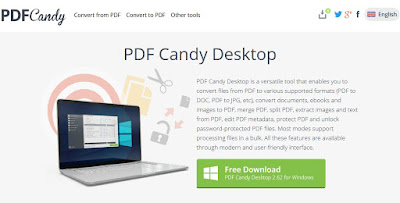Digital Forensics: Steganography Part II
Steganography คือ เทคนิคในการซ่อนข้อมูลที่ ต้องการรักษาความลับไว้ในข้อมูลอื่นที่มีขนาดใหญ่กว่า ผู้ที่ไม่รู้วิธีซ่อนข้อมูลจะไม่สามารถอ่านข้อมูลที่ซ่อนอยู่นั้นได้ เช่น การซ่อนข้อความไว้ในไฟล์รูปภาพ โดยการแทนที่ข้อมูลในบิตสุดท้ายของแต่ละพิกเซลด้วยบิตของข้อความที่เป็นความลับ
ตัวอย่างเช่น ในกรณีที่สายลับมีการส่งจดหมายติดต่อไปยังหน่วยงานของตน สมมติจดหมายที่ถูกส่งไปนั้นถูกเปิดตรวจสอบระหว่างทาง หากข้อความถูกเข้ารหัสไว้ก็อาจก่อให้เกิดความสงสัยแก่ผู้ตรวจสอบว่า จดหมายนี้อาจมีข้อความที่เป็นความลับอยู่ แต่หากในจดหมายนั้นใช้วิธีการอำพรางข้อมูล ในการซ่อนข้อความแล้ว ข้อความในจดหมายนั้นก็เสมือนกับจดหมายทั่วไป ไม่มีสิ่งที่เป็นจุดน่าสงสัย
กลุ่มอาชญากรทางไซเบอร์ สามารถใช้เทคนิคนี้ในการซ่อนข้อมูลที่ขโมยออกมาได้ไว้ในไฟล์รูปภาพหรือไฟล์วิดีโอ จากนั้นส่งออกไปผ่านช่องทางปกติ หรือเขียนมัลแวร์ที่ติดต่อกับเซิร์ฟเวอร์ที่ใช้ควบคุมและสั่งการโดยใช้วิธีอำพรางข้อมูลเพื่อหลีกเลี่ยงระบบตรวจจับมัลแวร์ได้
การจะวิเคราะห์ว่าไฟล์ต้องสงสัยมีการใช้เทคนิค Steganography เพื่อซ่อนอำพรางข้อมูลหรือไม่นั้นอาจต้องใช้กระบวนการทางคณิตศาสตร์และสถิติเข้ามาช่วย เช่น ตรวจสอบ histrogram เพื่อหารูปแบบการกระจายตัวของข้อมูลที่ผิดปกติ อย่างไรก็ตาม เนื่องจากต้องอาศัยวิธีการที่ค่อนข้างซับซ้อน เครื่องมือที่มีอยู่ในปัจจุบันก็อาจยังไม่สามารถตรวจจับกระบวนการเหล่านี้ได้ทั้งหมด ซึ่งก็เป็นอีกหนึ่งความท้าทายที่ต้องเตรียมพร้อมรับมือในอนาคต
เครื่องมือที่ใช้เทคนิค Steganography
OpenStego - http://www.openstego.info/
OpenStego provides two main functionalities:
- Data Hiding: It can hide any data within a cover file (e.g. images).
- Watermarking (beta): Watermarking files (e.g. images) with an invisible signature. It can be used to detect unauthorized file copying.
Steghide - http://steghide.sourceforge.net/download.php
StegFS - http://sourceforge.net/projects/stegfs/
pngcheck - http://www.libpng.org/pub/png/apps/pngcheck.html
pngcheck verifies the integrity of PNG, JNG and MNG files (by checking the internal 32-bit CRCs [checksums] and decompressing the image data); it can optionally dump almost all of the chunk-level information in the image in human-readable form. For example, it can be used to print the basic statistics about an image (dimensions, bit depth, etc.); to list the color and transparency info in its palette (assuming it has one); or to extract the embedded text annotations. This is a command-line program with batch capabilities.
GIMP - http://www.gimp.org/downloads/
Audacity - http://audacity.sourceforge.net/download
MP3Stego - http://www.petitcolas.net/steganography/mp3stego
ffmpeg (for video analysis) - https://www.ffmpeg.org/download.html
ที่มา https://bit.ly/2I8iv4P
https://bit.ly/2GDxrWf
https://bit.ly/2GlsYIk
https://bit.ly/2MYKH91
https://bit.ly/2RS6Bvv
https://bit.ly/2RWd1cL
https://bit.ly/2tiyaEr
https://bit.ly/2Dtpb7W
Digital Forensics: Steganography Part I
หมายเหตุ:เนื้อหาในเว็บไซต์นี้มีขึ้นเพื่อวัตถุประสงค์ในการให้ข้อมูลและเพื่อการศึกษาเท่านั้น
* หากมีข้อมูลข้อผิดพลาดประการใด ขออภัยมา ณ ที่นี้ด้วย รบกวนแจ้ง Admin เพื่อแก้ไขต่อไป
ขอบคุณครับ
#WindowsForensic #computerforensic #ComputerForensics #dfir #forensics #digitalforensics #investigation #cybercrime #fraud #windowsforensics






















































